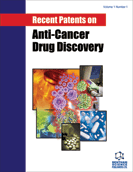
Abstract
The degradation of intracellular proteins is targeted by ubiquitin via non-lysosomal proteolytic pathway in the cell system. These ubiquitin molecules have been found to be conserved from yeast to humans. Ubiquitin proteasome machinery utilises ATP and other mechanisms for degrading proteins of cytosol as well as nucleus. This process of ubiquitination is regulated by activating the E3 enzyme ligase, involved in phosphorylation. In humans, proteins which regulate the cell cycle are controlled by ubiquitin; therefore the ubiquitin-proteasome pathway can be targeted for novel anti-cancer strategies. Dysregulation of the components of the ubiquitin system has been linked to many diseases like cancer and inflammation. The primary triggering mechanism (apoptosis) of these diseases can also be induced when TNF-related apoptosis-inducing ligand (TRAIL) binds to its specific receptor DR4 and DR5. In this review, the emerging prospects and importance of ubiquitin proteasome pathway as an evolving anticancer strategy have been discussed. Current challenges in the field of drug discovery have also been discussed on the basis of recent patents on cancer diagnosis and therapeutics.
Keywords: Apoptosis, cancer, CDK, NF-KB alternative pathway, p27 (a cyclin dependent kinase), proteasome pathway, TRAIL pathway, ubiquitin, ubiquitin machinery.
Recent Patents on Anti-Cancer Drug Discovery
Title:The Ubiquitin-Proteasome Pathway an Emerging Anticancer Strategy for Therapeutics: A Patent Analysis
Volume: 10 Issue: 2
Author(s): Chakresh K. Jain, Shivam Arora, Aparna Khanna, Money Gupta, Gulshan Wadhwa and Sanjeev K. Sharma
Affiliation:
Keywords: Apoptosis, cancer, CDK, NF-KB alternative pathway, p27 (a cyclin dependent kinase), proteasome pathway, TRAIL pathway, ubiquitin, ubiquitin machinery.
Abstract: The degradation of intracellular proteins is targeted by ubiquitin via non-lysosomal proteolytic pathway in the cell system. These ubiquitin molecules have been found to be conserved from yeast to humans. Ubiquitin proteasome machinery utilises ATP and other mechanisms for degrading proteins of cytosol as well as nucleus. This process of ubiquitination is regulated by activating the E3 enzyme ligase, involved in phosphorylation. In humans, proteins which regulate the cell cycle are controlled by ubiquitin; therefore the ubiquitin-proteasome pathway can be targeted for novel anti-cancer strategies. Dysregulation of the components of the ubiquitin system has been linked to many diseases like cancer and inflammation. The primary triggering mechanism (apoptosis) of these diseases can also be induced when TNF-related apoptosis-inducing ligand (TRAIL) binds to its specific receptor DR4 and DR5. In this review, the emerging prospects and importance of ubiquitin proteasome pathway as an evolving anticancer strategy have been discussed. Current challenges in the field of drug discovery have also been discussed on the basis of recent patents on cancer diagnosis and therapeutics.
Export Options
About this article
Cite this article as:
Jain K. Chakresh, Arora Shivam, Khanna Aparna, Gupta Money, Wadhwa Gulshan and Sharma K. Sanjeev, The Ubiquitin-Proteasome Pathway an Emerging Anticancer Strategy for Therapeutics: A Patent Analysis, Recent Patents on Anti-Cancer Drug Discovery 2015; 10 (2) . https://dx.doi.org/10.2174/1574892810666150416111213
| DOI https://dx.doi.org/10.2174/1574892810666150416111213 |
Print ISSN 1574-8928 |
| Publisher Name Bentham Science Publisher |
Online ISSN 2212-3970 |
 36
36 3
3 1
1 1
1
- Author Guidelines
- Graphical Abstracts
- Fabricating and Stating False Information
- Research Misconduct
- Post Publication Discussions and Corrections
- Publishing Ethics and Rectitude
- Increase Visibility of Your Article
- Archiving Policies
- Peer Review Workflow
- Order Your Article Before Print
- Promote Your Article
- Manuscript Transfer Facility
- Editorial Policies
- Allegations from Whistleblowers
Related Articles
-
Human ABC Transporters at blood-CNS Interfaces as Determinants of CNS Drug Penetration
Current Pharmaceutical Design Pathophysiology of IgG4-Related Disease
Current Immunology Reviews (Discontinued) New Analytical Tools for Studying Autoimmune Diseases
Current Pharmaceutical Design Glycogen Synthase Kinase-β3 in Ischemic Neuronal Death
Current Neurovascular Research Damaged Proteins Bearing L-Isoaspartyl Residues and Aging: A Dynamic Equilibrium Between Generation of Isomerized Forms and Repair by PIMT
Current Aging Science Different 6-Aryl-Fulvenes Exert Anti-proliferative effects on Cancer Cells
Anti-Cancer Agents in Medicinal Chemistry Camptothecins and Lung Cancer: Improved Delivery Systems by Aerosol
Current Cancer Drug Targets Anticancer Activity and Mechanism Investigation of Beauvericin Isolated from Secondary Metabolites of the Mangrove Endophytic Fungi
Anti-Cancer Agents in Medicinal Chemistry Imaging Adoptive Cell Transfer Based Cancer Immunotherapy
Current Pharmaceutical Biotechnology Cyclin-Dependent Kinase 4/6 (Cdk4/6) Inhibitors: Perspectives in Cancer Therapy and Imaging
Mini-Reviews in Medicinal Chemistry “Virostatics” as a Potential New Class of HIV Drugs
Current Pharmaceutical Design An Overview of Olive Oil Biomolecules
Current Biotechnology Modulation of the Fce Receptor I Signaling by Tyrosine Kinase Inhibitors: Search for Therapeutic Targets of Inflammatory and Allergy Diseases
Current Pharmaceutical Design Cancer Therapy Based on a Mechanism of Action for Controlling the Immune System and the Resulting Patent Portfolio
Recent Patents on Endocrine, Metabolic & Immune Drug Discovery (Discontinued) Vitamin D Receptor Agonists, Cancer and the Immune System: An Intricate Relationship
Current Topics in Medicinal Chemistry Phage Display as a Tool for Protease Ligand Discovery
Current Pharmaceutical Biotechnology Molecular Basis of Human Diseases and Targeted Therapy Based on Small-Molecule Inhibitors of ER Stress-Induced Signaling Pathways
Current Molecular Medicine Genetically Engineered Stem Cells for Therapeutic Gene Delivery
Current Gene Therapy MDM4 (MDMX) and its Transcript Variants
Current Genomics Natural-derived Polyphenols as Potential Anticancer Agents
Anti-Cancer Agents in Medicinal Chemistry


























